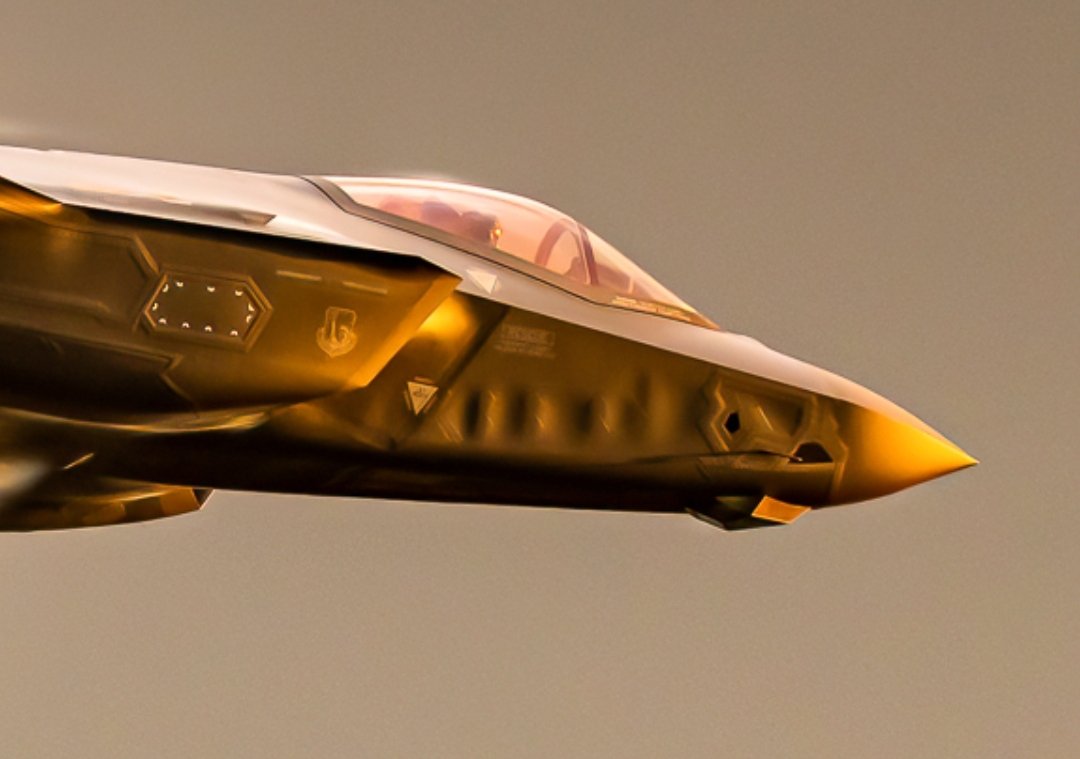With its new radar and EOTS, as well as upgraded computer and ew suite F35 block4 is now a 5.5 gen platform when it comes to sensors and avionics.the APG-81 is already a world beater, now they come up with an even better one
F-35 Will Get New Radar Under Massive Upgrade Initiative
The new AN/APG-85 advanced active electronically scanned array radar will be compatible with all variants of the new Block 4 F-35s.
BYEMMA HELFRICH|PUBLISHED JAN 3, 2023 4:55 PM
THE WAR ZONE
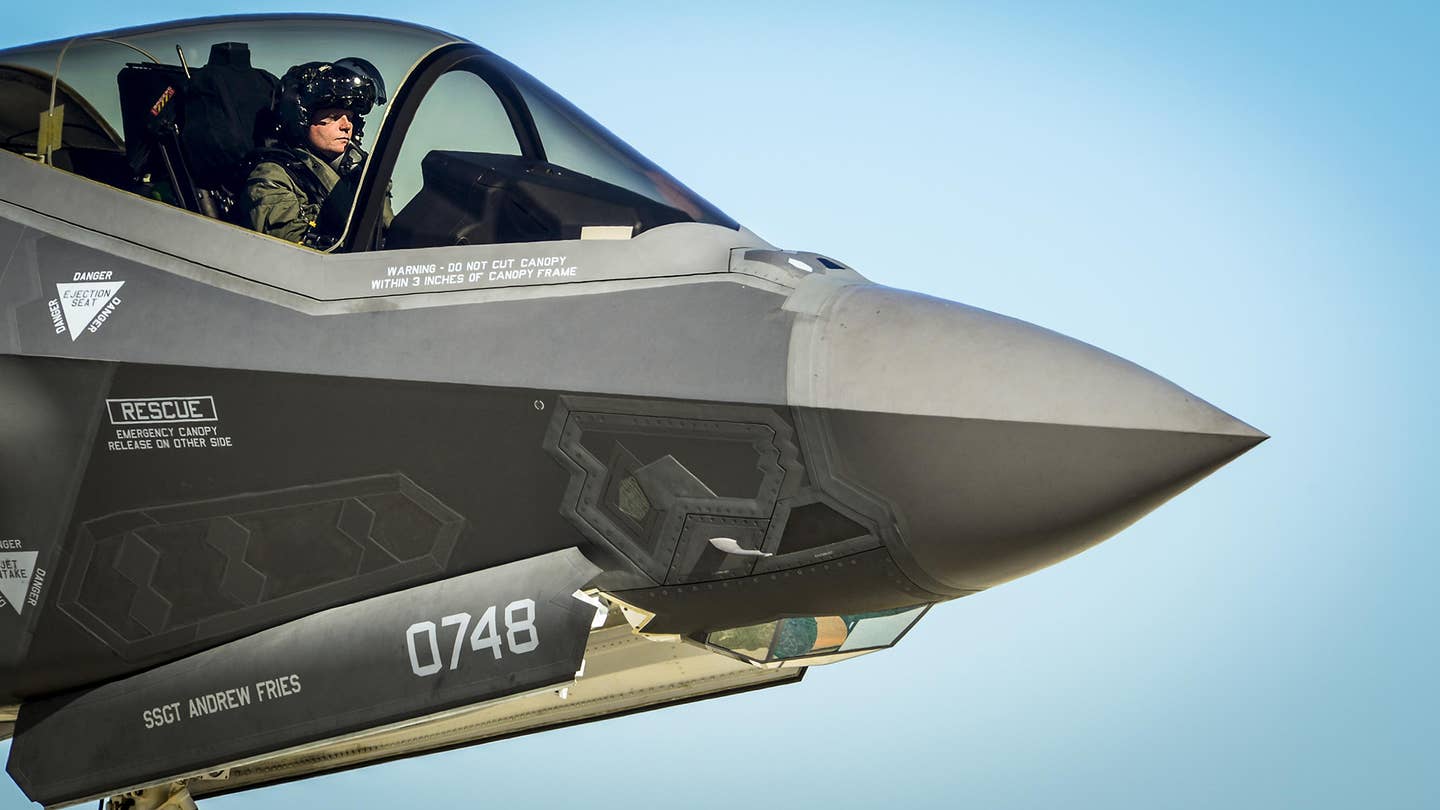
USAF
SHARE
EMMA HELFRICHView Emma Helfrich's Articles
After a mysterious radar designation emerged online in news stories about the F-35 Lightning II program, the internet quickly began debating whether it was a typo or a new capability altogether. Now, The War Zone has official confirmation that the fifth-generation stealth fighter will, in fact, be getting a new radar designated as the AN/APG-85.
One of the first mentions of the AN/APG-85 appeared in a Defense News article published in April of last year. Reporter Stephen Losey noted that $921 million had been added to the U.S. Air Force’s wishlist for Fiscal Year 2023 (FY2023) to procure seven more “Block 4 F-35As with the APG-85 radar from Lot 17.” Then, in a separate article authored last December, Losey wrote of the radar again in the same context. The references were later highlighted and questioned by the @MIL_STD Twitter account.

F-35 Will Get New Radar Under Massive Upgrade Initiative (Updated)
The new AN/APG-85 advanced active electronically scanned array radar will be compatible with all variants of the new Block 4 F-35s.www.thedrive.com
Latest Thread
You are using an out of date browser. It may not display this or other websites correctly.
You should upgrade or use an alternative browser.
You should upgrade or use an alternative browser.
Certainly maturing things up for upcoming NGAD.With its new radar and EOTS, as well as upgraded computer and ew suite F35 block4 is now a 5.5 gen platform when it comes to sensors and avionics.
I will not be surprised if an APG-85 variant with >2000 trm will be NGAD radar.
I think it should be moved here so not to derail the TFX thread
Yeah DAS comes ready with that.
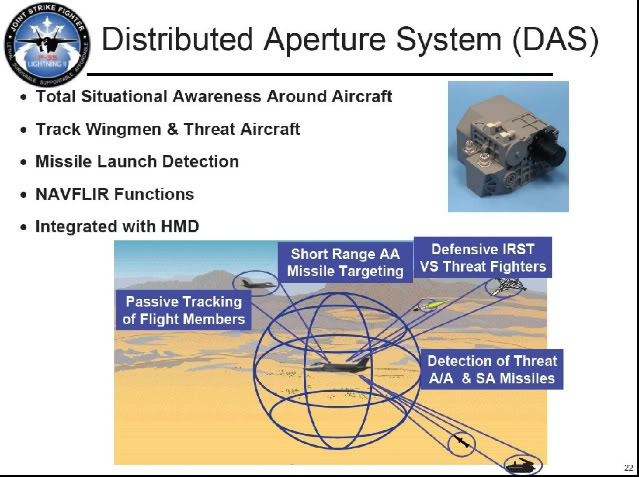
View attachment 52932
F-16 glowing hot body seen from a Sniper, AAQ-37 will be significantly better at disrciminating contrast with the background
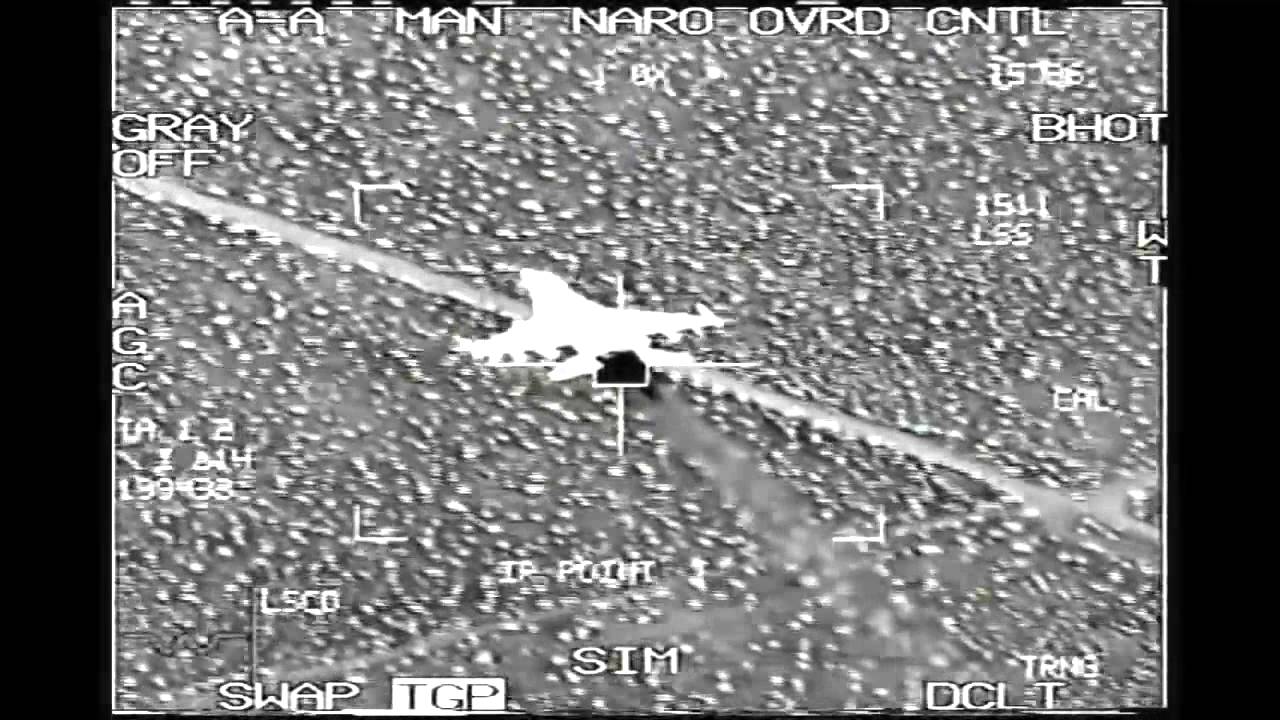
Yes, but IRST's (as in A-A) need to detect and track objects which are a lot cooler compared to something being fired, explosions (and solid fuel propulsion are much much hotter than an aircraft going supersonic) are easier to detect and track because of that.
Yeah DAS comes ready with that.

View attachment 52932
F-16 glowing hot body seen from a Sniper, AAQ-37 will be significantly better at disrciminating contrast with the background

Yeah because it happens to be FLIR + IRST in one packageThere is a reason why it is not really advertised as IRST.
Even in the infographic it is short range missile targeting.I think it should be moved here so not to derail the TFX thread
Yeah DAS comes ready with that.

View attachment 52932
F-16 glowing hot body seen from a Sniper, AAQ-37 will be significantly better at disrciminating contrast with the background

Yeah because it happens to be FLIR + IRST in one package
You are mixing up EOTS with DAS for the most part
Well I never actually bother your short to medium targeting statements. My post is counterpoint to your post which states that its more an MWS, Its actually more like enhanced situational awareness suite in an IRST form.Even in the infographic it is short range missile targeting.
My badYou are mixing up EOTS with DAS for the most part
I was going to share the same video but you were faster.. it is one of my favorite channels, and it shows F-35 is a masterpiece despite all negativities! it is a very good video indeed.The latest video of "Real Engineering" features F-35B
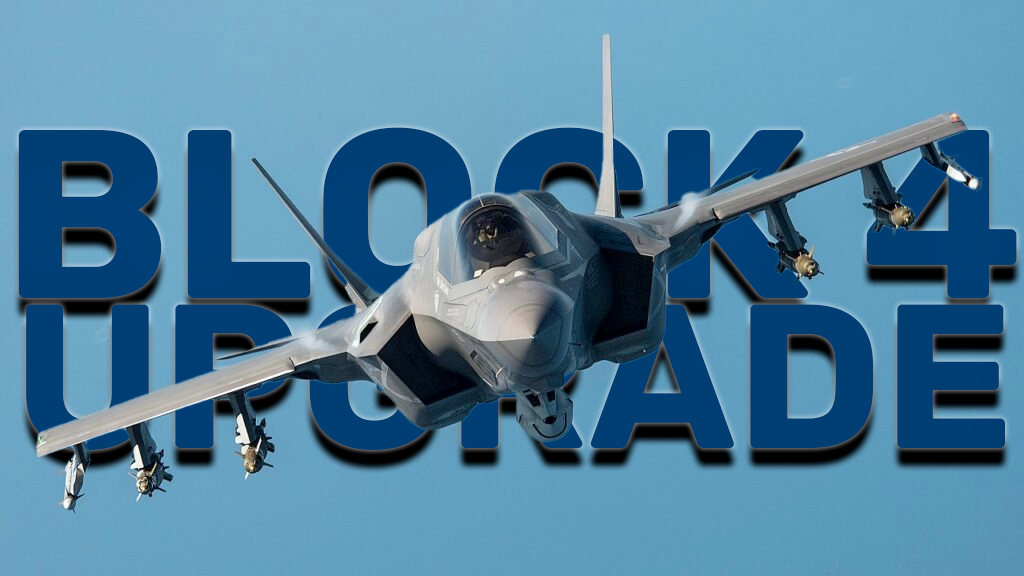
The F-35 is getting a $15 billion upgrade that'll make it a whole new beast
The F-35 is getting a massive $15 billion upgrade that will make it a dramatically more capable fighter.
 www.sandboxx.us
www.sandboxx.us
Lockheed Martin’s F-35 Lightning II, also commonly known as the Joint Strike Fighter, is about to undergo a largely classified upgrade that promises to turn the technologically advanced aircraft into a far more capable fighter. New improvements include 17 new weapon systems, powerful new radar, expanded electronic warfare capabilities, powerful propulsion upgrades, and more — much of which remains tucked nearly behind a veil of vast quantities of classified funding.
Throughout its service life, the F-35 has been plagued by technical setbacks and cost overruns so egregious that they often overshadow the platform itself, which has been touted by pilots and Defense officials alike as a revolution in tactical airpower. Now, with this new slew of enhancements cruising toward service, the F-35 program may finally produce a data-fusing aerial powerhouse that silences the platform’s most vocal critics… that is, if everything goes according to plan.
(More at link)
Manomed The Second
Committed member
I've seen lots of russians trying to make fun of F35 crashes.
From 2006 to 2023 theres been 890+ f35s have been produced and 11 of them crashed for a jet that is in the serial production from 06 to 23 that is amazing unlike Su 57 that didn't crashed because there is not many of them.
When a jet enters serial production It is expected to have incidents like this.
75 SU 57 vs 890+ F35s
From 2006 to 2023 theres been 890+ f35s have been produced and 11 of them crashed for a jet that is in the serial production from 06 to 23 that is amazing unlike Su 57 that didn't crashed because there is not many of them.
When a jet enters serial production It is expected to have incidents like this.
75 SU 57 vs 890+ F35s
There's only 10+ SU-57 in active service.I've seen lots of russians trying to make fun of F35 crashes.
From 2006 to 2023 theres been 890+ f35s have been produced and 11 of them crashed for a jet that is in the serial production from 06 to 23 that is amazing unlike Su 57 that didn't crashed because there is not many of them.
When a jet enters serial production It is expected to have incidents like this.
75 SU 57 vs 890+ F35s
anyway welcome back Manomed the 2nd
Just another great photo by Cem Doğut. Undoubtedly he is one of the best in fighter jet photography.

A Dutch F-35 showing off what's under her skirt. (taken from r/WarplanePorn)

A Dutch F-35 showing off what's under her skirt. (taken from r/WarplanePorn)
F-35 Closer To Carrying Six AIM-120 Missiles Internally
Known as Sidekick, the upgrade will give F-35As and Cs the ability to go from four to six AIM-120 missiles in their internal bays.BYEMMA HELFRICH|PUBLISHED MAR 24, 2023 2:12 PM EDT
THE WAR ZONE

Dutch F-35 brandishing its AIM-120s during a NATO air policing drill. Photo by Bartek Bera
EMMA HELFRICHView Emma Helfrich's Articles
Lockheed Martin has confirmed that work is progressing on a weapons bay adapter for F-35 Lightning II A and C variants, according to a response by the company to The War Zone’s inquiry. Dubbed Sidekick, the device would increase the amount of AIM-120 Advanced Medium-Range Air-to-Air Missiles (AMRAAM) the stealth jet can carry internally from four to six.
The Sidekick concept has been floating around in the F-35 space for a few years, but it was largely unclear what Lockheed Martin’s exact plan for the adapter was, as well as its developmental status, or if its emergence was at all related to the jet’s ongoing Block 4 modernization effort. The War Zone earlier this month reached out to the company to ask for any updates and was given confirmation that Sidekick now has backing.
“A new weapons adapter, nicknamed Sidekick, enables the F-35 to carry two AIM-120 sized missiles at internal weapons bay stations 4 and 8,” Lockheed Martin responded in a statement. “The adapter development is on contract and proceeding on schedule.”
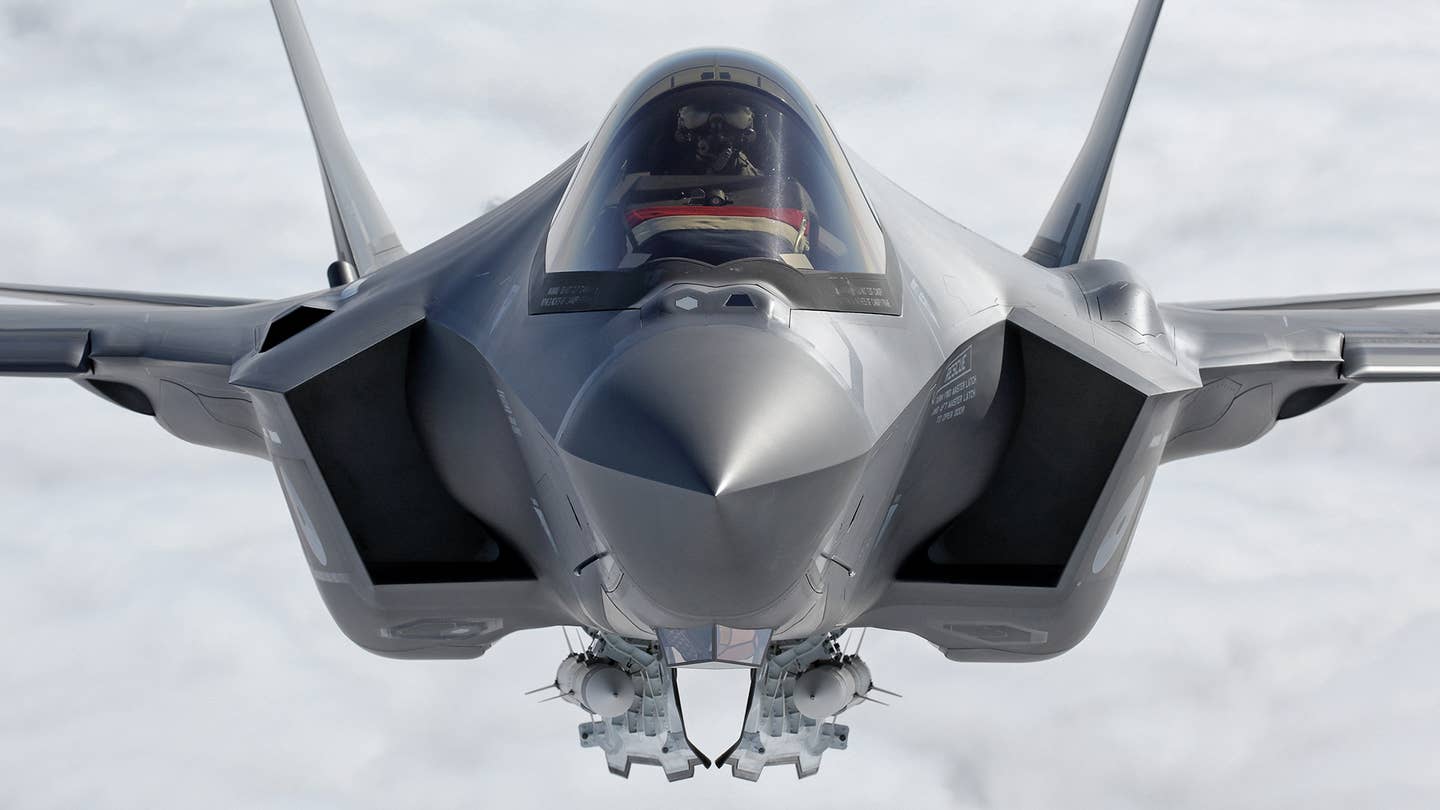
A Dutch F-35 armed with two AIM-120 AMRAAMs during a recent NATO air policing drill. Credit: Bartek Bera
As noted, Sidekick will only be compatible with F-35As and carrier-capable F-35C variants. This is because the remaining short takeoff and vertical landing (STOVL) F-35B variants belonging to the U.S. Marine Corps have smaller internal weapons bays on account of the lift fan that it uses to realize its STOVL capabilities.
The War Zone followed up with Lockheed Martin to clarify if Sidekick will be a part of the Block 4 upgrade effort or if it will be an independent offering that could be retrofitted to older F-35s as well as installed on new-build models. The company referred us to the F-35 Joint Program Office, which was unable to offer comment at the time of publication.
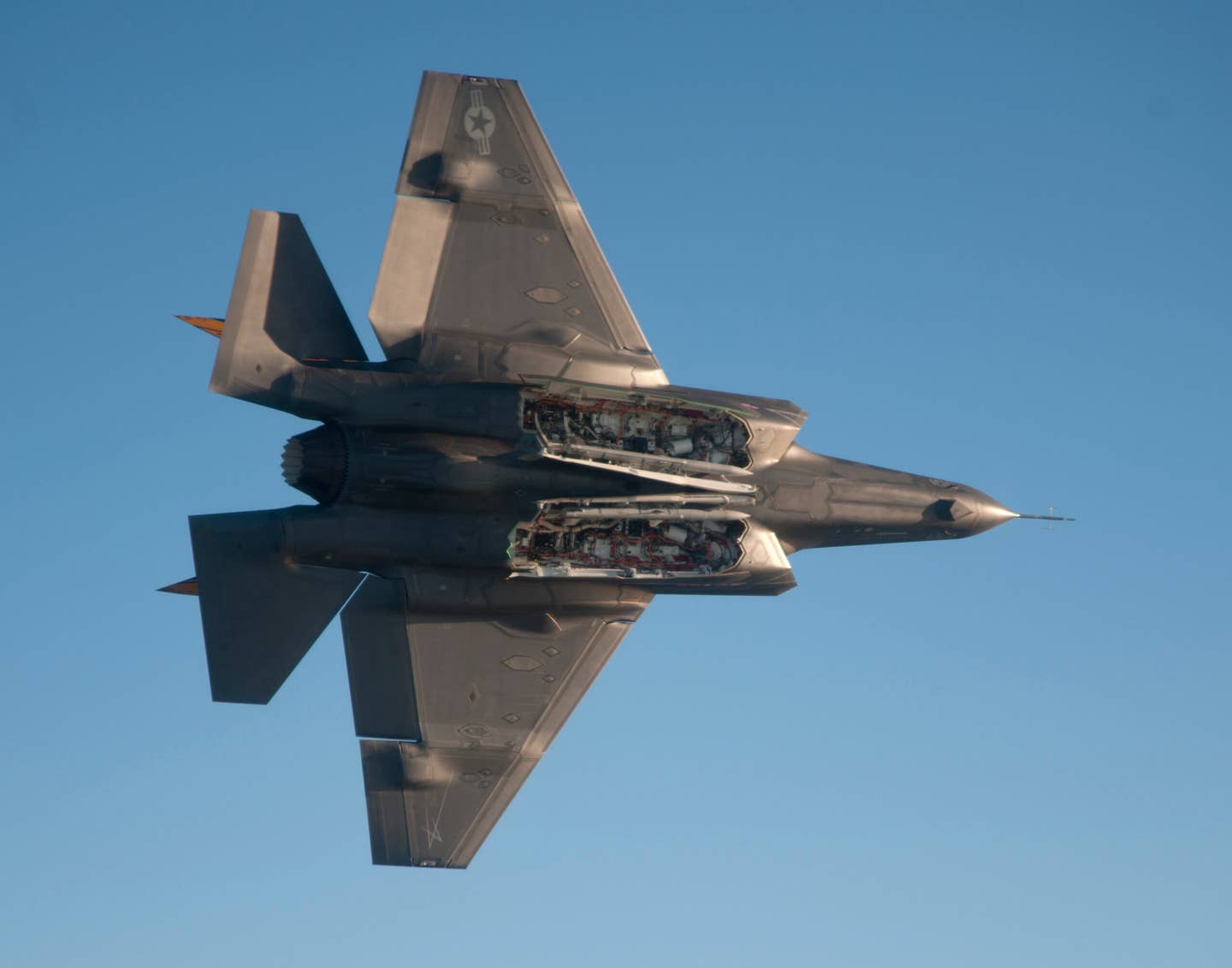
An F-35C is flown by test pilot Peter Wilson to evaluate the aircraft's flying qualities with the internal weapons bays open-loaded with AIM-120 Advanced Medium-range air-to-air missiles. Credit: U.S. Navy photo courtesy of Lockheed Martin/by Andy Wolfe
It’s worth noting, though, that a U.S. Navy unfunded priority list (UPL) from Fiscal Year 2021 states that the service has a clear interest in Sidekick. The document also indicates that the adapter is expected to be incorporated into the service’s F-35Cs starting with Lot 15, of which deliveries are expected to begin in the second half of this year. This would indicate that Sidekick could be delivered well before Block 4, which is expected to roll out with Lot 17 F-35 A/B/C variants, but it is unclear if this is still the Navy’s intended plan for the device two years later.

The current AIM-120 internal carriage configuration on the F-35. (UK MOD)
Additionally, when Canada closed its deal to buy 88 F-35s in January of this year, a senior Canadian defense official confirmed that Lockheed Martin’s latest Lot 18 Block 4 F-35As will be delivered as part of the package. A graphic that the Canadian Ministry of Defense released along with the announcement pointedly listed the ability to internally carry six AIM-120s as being a feature of the fleet, which suggests that Sidekick would be a part of the country’s F-35 buy and potentially a Block 4 core feature.
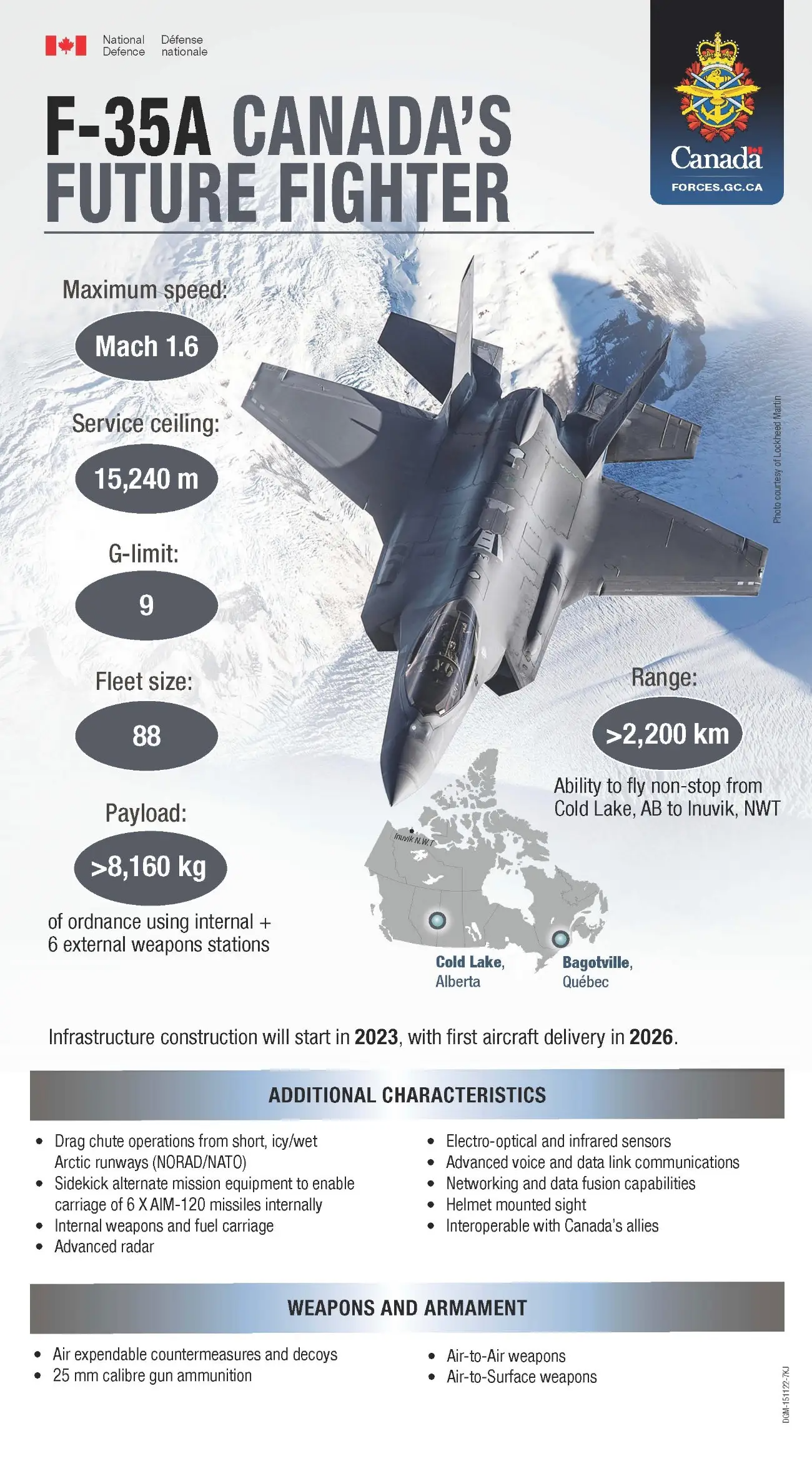
Infographic outlining the key features of Canada's future F-35As, including the ability to internally carry six AIM-120s. Credit: Canadian Ministry of Defense
The first mention of Sidekick occurred during a Lockheed Martin media briefing back in May 2019. Officials speaking at the event broadly explained that the device would take the form of a weapons rack adapter, but Aviation Week reported at the time that the company hadn’t “released details of the design of the Sidekick mechanism.”
The War Zone asked Lockheed Martin for clarification about whether or not the F-35’s weapons bays and bulkhead will have to be modified in order to accommodate the increase in internal air-to-air missile magazine depth, but the company was unable to provide those details. However, there have been several reports over the years that indicate if not outright confirm that such alterations will be required to support the device.
Another Aviation Week article from July 2019 provided one such report, referencing a Department of Defense contract with Lockheed Martin issued that month awarding the company $34.7 million for a structural modification to the jet’s Station 425 bulkhead. The announcement stated that the modification was “required for F-35A and F-35C to allow full-envelope internal carriage of aft heavy weaponry.” Though, it is unclear if Sidekick in its current form would still necessitate these changes.

Lockheed Martin graphic showing the F-35's weapons stations capacity. Credit: Lockheed Martin
Also speaking at the 2019 Lockheed Martin media briefing was the company’s F-35 test pilot Tony ‘Brick’ Wilson, who explained, “The extra missiles add a little weight but are not adding extra drag.” Wilson went on to add that Lockheed Martin is developing the Sidekick entirely on its own, using the company’s own internal research and development funding.
“Lockheed Martin has gone out on its own and developed this capability,” Wilson said. “And now we’ve let the [joint program office] know that it’s out there. It will be over to [business development] and other people to decide how and when it gets implemented. Lockheed Martin stands ready to help the customer implement it when they want it.”
It’s clear now that this is no longer the case and that Sidekick is a contracted feature under official development.
The F-35 is also capable of carrying AMRAAMs on its external weapons pylons under its wings. However, the option to carry more missiles internally would be more supportive of the jet’s stealth operations, providing it with more firepower should the mission call for it without compromising its low observable (stealthy) profile.
Being limited to four AIM-120s internally has long been a point of F-35 criticism, especially as air combat has evolved and the magazine depth of modern fighters has become more of a concern. Six AIM-120s, an increase of 50%, will be a major boost to the F-35’s air-to-air chops, equating its AIM-120 payload capacity to that of the F-22 Raptor, increasing lethality overall and expanding its tactical flexibility in the air-to-air combat arena. It could also allow the F-35 to field even more air-to-air missiles in its weapons bays, albeit smaller ones, in the future as they become available.
Despite there being no official confirmation that Sidekick’s development is directly tied to the F-35’s ongoing Block 4 upgrades, the increase in weapons payload would nonetheless line up with the effort’s overall goal of boosting the jet’s lethality and survivability. These upgrades will include a brand new active electronically scanned array radar, the integration of a variety of new weapons like the GBU-53/B StormBreaker precision-guided bomb, and a complete overhaul of the jet’s computer backbone known as Technology Refresh-3. Block 4 F-35’s drastically enhanced electronic warfare suite is perhaps its most important feature, which you can read all about here.
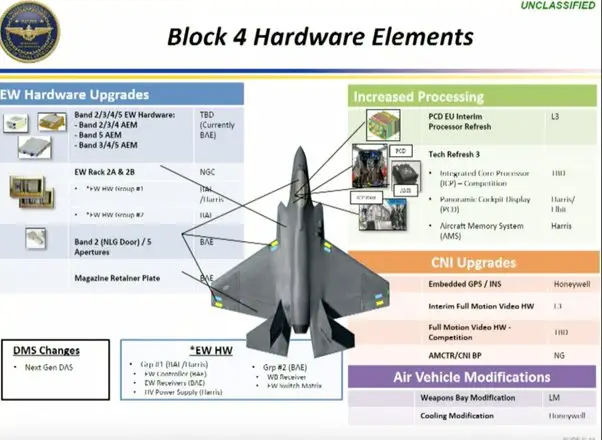
Some of the unclassified upgrades that are considered to be part of Block 4. The exact configuration is not publicly disclosed just yet. Credit: DOD
While Lockheed Martin has yet to provide a timeline for when Sidekick may come onto the scene, it is at least known that the company’s target for wrapping the Block 4 upgrades is 2029 if everything stays on track. In the meantime, it will be interesting to see how Sidekick ultimately integrates with the F-35’s ongoing evolution.
If The War Zone receives responses to our follow-up questions from the F-35 Joint Program Office, we’ll be sure to provide an update.
Author’s note: Thank you to the talented Bartek Bera for the impressive photos of the Dutch F-35s and their AIM-120s included in this article. Be sure to check out more of his work on his Facebook page here.
Tyler Rogoway contributed to this report.
Let's say its true 2028 they will fly, you have to take into account the numbers ofYes.
No, the first prototype will fly by 2027/28.
I am not gonna call it over optimistic because what we saw with TFX development it is very possible.
- Further test flight
- Test on other subsystems (radar, engine etc)
- aero modifications and bug fix
- finally choosing standard production model
- actually producing the jet in LRIP
- Fixing bugs again
- Goes on to FRP
So does the Rafale which took quite some time to mature, albeit faster the EF.
Any of the new F-35 competitor will have to face the same challenge as before with a far more limited budget than the U.S had and with significantly more complex requirements for a 6th gen jet. And it happens that most (with China as exception) never really had the resume of building VLO fighter before. + Most of it are multinational projects and its common for multinational projects to fail mid way or pass the deadline because of "disagreements".
In the meantime the F-35 will have its incremental block upgrade. Many are classified (as they should be) , but we at least know that it will have new radar (APG-85), new engine to satisfy power requirement and not the least a very sophisticated EW suite.

New Electronic Warfare Suite Top Feature Of F-35 Block 4, Air Combat Boss Says
The F-35's Block 4 upgrade has many features, but Air Combat Command's commander says its electronic warfare abilities will be most critical.
and this will be continuously upgraded, matured over time, while its competitors are still busy learning to fly.
So yeah 2050 sounds like a fair deal .
It seems they are abandoning the plan for adaptive cycle engine.
Well even if yes, the F135 ECU will generate the power necessary to power the extensive upgrade on electronics on Block IV...and this is yet to be approved by congress.
No, in 2040s at least China would much closer to us in fighter technology.
Close, but not close enough. China progresses but so does the U.S, the gap will stay more or less the same.
Otoh, the rest will be far behind, simply put as I've mentioned before other than China none of the other competitors have built 5th gen jet before they "jumped" to 6th gen.
Yeah, because it is not the actual metal that is bending.
Wouldn't it be detrimental to the aircraft?Yeah, because it is not the actual metal that is bending.
schuimpjes
Experienced member
To the flight. Must be a turbulences there on the bended areas. That turbulences would become parasitic drag, more specific, form drag, drag because of the form of the aircraft.Wouldn't it be detrimental to the aircraft?
Still remember and have to remember always FAA’s PHAK lol. God tier book about the basic things that pilot have to know









